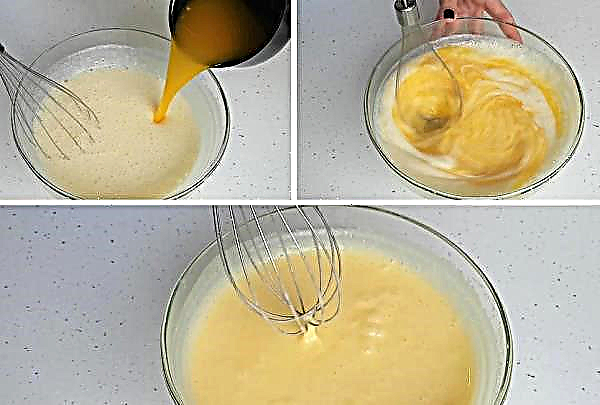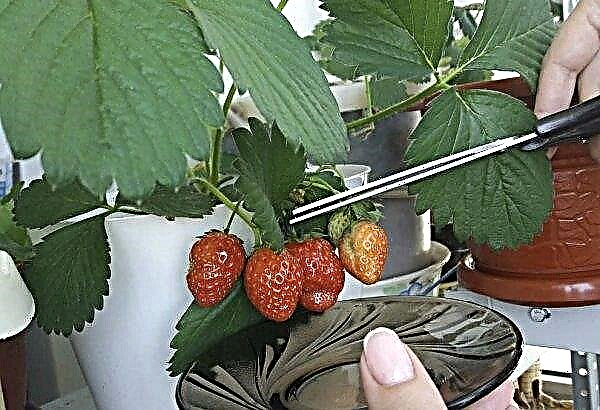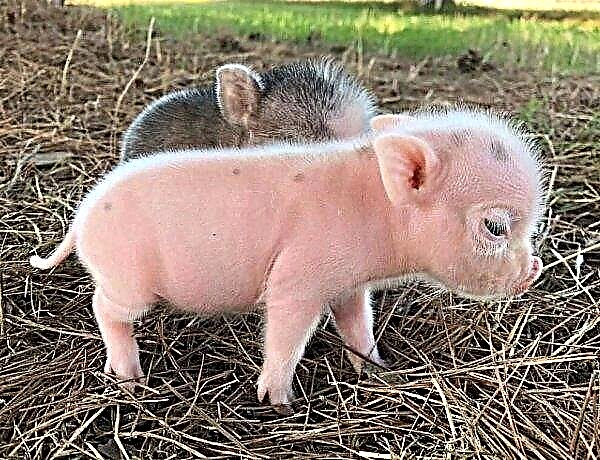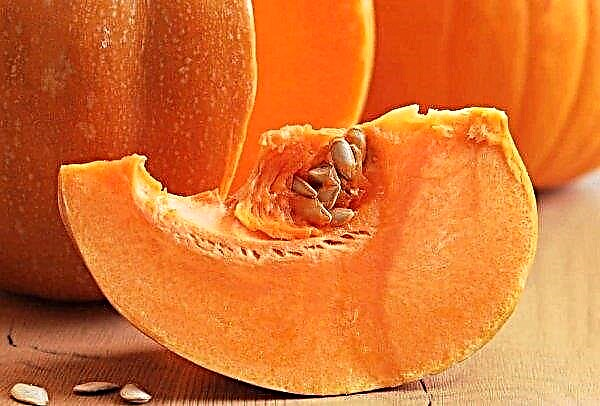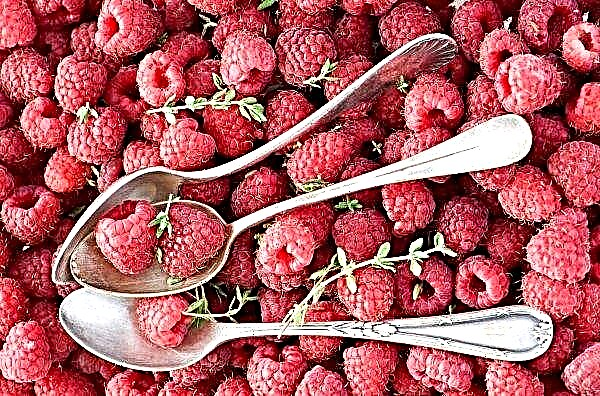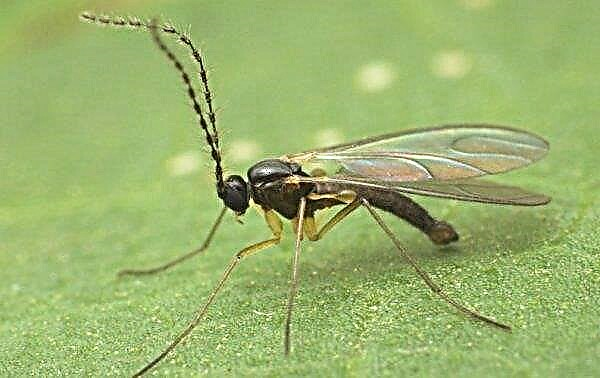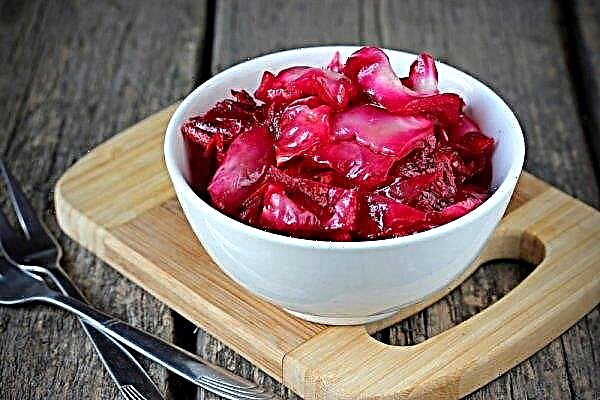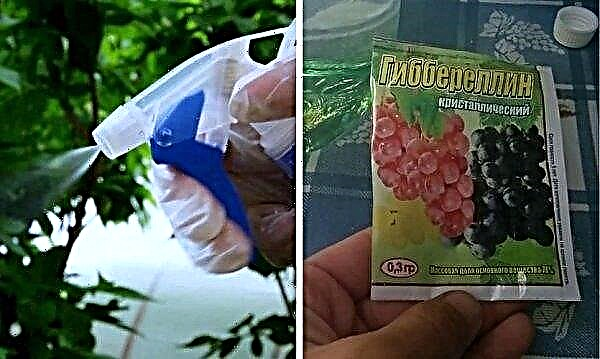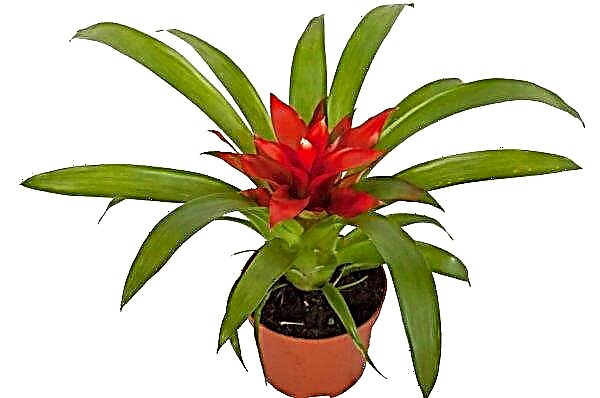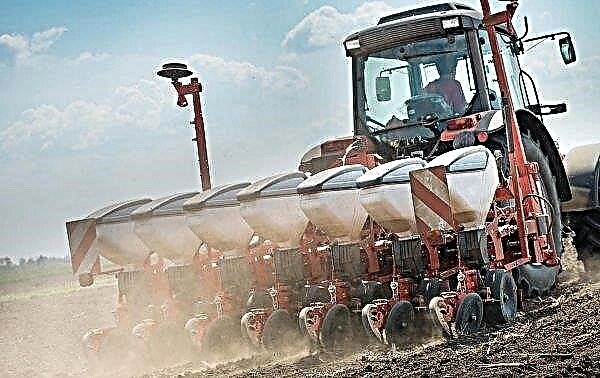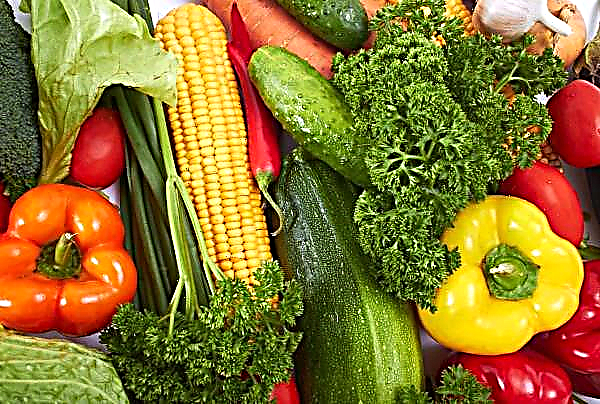Gardeners believe that the most delicious among tomatoes are varieties that have heart-shaped fruits. These varieties include tomato Danko, which will be discussed below. Learn more about the features of its cultivation and harvesting.
Selection and botanical description of the culture
This tomato variety was bred by Siberian breeders and entered into the State Register of the Russian Federation in 2000. It belongs to mid-early grades; it can be planted in open ground and grown in greenhouses. It tolerates low temperatures and arid weather.
The plant forms bushes up to 70 cm high, which subsequently require garter, with a small number of leaves. The leaves are medium, saturated green, slightly corrugated.

The fruits are heart-shaped, large, the weight can reach 250-300 g. In ripe form they have a bright red color. Dark green spots appear near the stalk, which disappear when the fruits fully ripen. The flesh tastes sweet, tender, sugar, fleshy; the skin is very thin. Productivity from one bush is up to 3–3.5 kg.
Advantages and disadvantages
- The Danko tomato variety has many positive qualities, which include:
- excellent taste;
- unpretentiousness to growing conditions;
- good enough yield;
- beautiful appearance;
- quick ripening after harvesting;
- resistance to most diseases and pests.
Important! One of the distinguishing features of this variety is that the fruits can ripen on the windowsill, which is well suited for regions with a cold climate.
- Negative qualities include:
- poor transportability;
- tendency of fruits to crack.
Self-growing seedlings
Tomato Danko is grown in a seedling method, which even a novice gardener can do. The main thing is to adhere to all requirements for the preparation and sowing of seeds, as well as for the care of seedlings.

Sowing time
The optimal period for sowing seeds in the soil will be the beginning of March, approximately 60–65 days before planting seedlings in a permanent place. Previously, 7-10 days before sowing, the seeds must be prepared. This procedure is described below.
The soil
To sow seeds of Danko tomato, you need to prepare suitable soil for this. Its composition should include ordinary soil, peat, humus, wood ash in a ratio of 4: 1: 1: 1. Such a composition will allow the soil to better pass moisture and air, fill it with nutrients. For disinfection, you can use a 1% solution of potassium permanganate or the drug "Fitosporin-M" (15 ml per 10 liters of water).
The tomato varieties of the determinant type also include:
Capacity for growing
Since the quality of seedlings depends on the capacity in which it is sown, this issue should be given attention.
There are such types of containers:
- Crates - can be used wooden, plastic or foam, up to 8-10 cm high, with drainage holes below. The benefit of them is that the boxes are easier to carry from place to place, rotate, transport; they require minimal financial costs. The downside is that during the planting of seedlings on the bed, the roots may be damaged, because of which the plant will take longer to take root.
- Individual cups - with a capacity of 100-200 ml with drainage. Convenient in that they are inexpensive, do not take up much space, can be used many times, seedlings are easily removed. The disadvantages include the fact that they are inconvenient when transporting or transporting and wrinkling easily, which can damage the roots of the seedling.
- Peat pills - containers made of pressed peat with nutrients, covered with a net. The advantage is that they are very convenient when transplanting seedlings in open ground, as they are planted together with the plant, nourish and strengthen the roots of seedlings. But tablets are used only once, they are not cheap, and we must constantly ensure that peat does not dry out.

Seed preparation
Danko tomato seeds should begin to be prepared for sowing in the second half of February.
And it consists of the following actions:
- soak the seeds for 10 minutes in 4% saline solution so that empty float;
- hold the seed in a light solution of potassium permanganate for 20-30 minutes;
- rinse with clean water and dry;
- Soak for 30 minutes in warm water for swelling by adding the growth stimulant Zircon, Korenvin, Epin, etc.
Next, you need to germinate the seeds: wrap them in a damp cloth or gauze, cover with a plastic bag on top, put in a warm place and regularly check the humidity. When they hatch 2-3 mm, you can start sowing.
Did you know? There are at least 10,000 species worldwide. tomatoes.
Sowing seeds
Sowing tomato Danko is best in early March.
To do this, you must:
- Fill containers with prepared soil, pour warm water.
- Make a 1 cm recess.
- In separate cups and tablets, throw 2 pcs.; make grooves in the boxes and plant seeds at a distance of 2 cm from each other, between the furrows - 4 cm.
- Sprinkle with dry soil on top and spray it with a spray bottle.
- Cover the container with transparent glass or film, put in a well-lit and warm place at a temperature not lower than + 22 ° С.
- When the first sprouts appear, lower the temperature to +17 ... + 18 ° C.

Seedling Care
In order to grow healthy and full seedlings, you need to take such measures:
- provide seedlings with a 12-hour light day using additional lighting (fluorescent lamps, phytolamps) so that the plants do not stretch;
- water once every 7 days with settled warm water, and at first it should be done with a spray gun;
- maintain temperature + 18 ° С during the day and + 15 ° С at night;
- periodically ventilate the room with seedlings, avoiding drafts;
- after the appearance of these leaves, fertilize with complex fertilizers; 35 g of superphosphate, 15 g of potassium sulfate, 5 g of urea can be mixed independently and diluted in 10 l of water, the next top dressing should be done after 2 weeks, etc., before planting seedlings on the bed;
- 3 weeks after seed germination, picking seedlings in a tank larger than the previous ones, so that the plants become stronger.
Seedling hardening
Immediately 2 weeks before planting the seedlings in the open ground, it is necessary to harden it, gradually lowering the temperature in the room by ventilation, or taking the seedlings to the balcony (veranda) for 30 minutes daily.

Over time, the stay of seedlings outside should be increased to several hours a day. It is important to avoid direct sunlight, thereby preventing burns on the leaves. It is also necessary to reduce the amount of watering. The day before planting, seedlings must be left on the street for a whole day.
Planting seedlings in a permanent place
To get a good crop, you need to responsibly approach such a question as the movement of seedlings in open ground.
The timing
Depending on the region, it is possible to plant Danko tomato seedlings from mid-May to early June, when the air temperature warms up to + 22–25 ° C during the day and + 15 ° C at night. It is necessary that the temperature of the soil should not be lower than + 15 ° С at a depth of 10–15 cm. The height of the seedlings should reach 20–25 cm with 7–9 adult leaves formed on them.
Seat selection and crop rotation
The first thing that a gardener should pay attention to when planting seedlings is this is the place of the future garden, which has the following requirements:
- the bed should be in an open, sunny, calm place with a deep groundwater table of more than 1.5 m;
- Danko tomatoes are well planted after legumes, mustard, onions, cabbage;
- you can not plant after pepper, eggplant, it is undesirable after potatoes, they do not need to be planted even nearby;
- around the perimeter you can sow sunflowers that will protect tomatoes in extreme heat;
- crop rotation is that it is recommended to plant tomato seedlings in the same place no earlier than after 3 years;
- the soil is light, loamy, with a neutral or weak acidity level.
Bed preparation
Ground for tomatoes needs to be prepared for planting seedlings. In autumn, the soil must be cleaned of weed grass and other debris, and then deeply dig a shovel for 1 bayonet, but without breaking the lumps of soil so that they freeze over during the winter.

In the spring, 5-6 days before transplanting, the soil must be treated with a solution of copper sulfate or copper chloroxide (1 tbsp.spoon of the drug per 10 liters of water), at the rate of 1-1.5 l of liquid per 1 m² of land. Mineral and organic fertilizers should be scattered on the surface.
On 1 m² of beds are:
- 1 glass of wood ash;
- 1 tbsp. a spoonful of potassium sulfate;
- 1 tbsp. a spoon of superphosphate;
- 3 kg of peat;
- 3 kg of humus;
- 3 kg of sawdust.
Next, the soil must be dug up, leveled with a rake and poured with a hot solution of potassium permanganate (3-4 liters per 1 m²).
Scheme and depth of landing
The optimal scheme for planting seedlings of Danko tomato seedlings is 4 bushes per 1 m². It is best to plant seedlings in rows at intervals of 50–60 cm. Between the bushes should be left at intervals of 40–45 cm; make furrows or holes up to 15 cm deep. Next to each seedling you need to put a peg to which the bushes will be attached later.

Further care
Another very important step in growing Danko tomatoes is the further care of the bushes. It includes timely watering and fertilizer, constant care of the land, treatment from diseases and pests.
Watering
This procedure must be carried out regularly, however, the first 8-10 days you do not need to water the tomatoes so that they better take root. Then you need to irrigate every 7-8 days, 1 liter of heated water for each plant. It is better to use the drip method under the root of the bush, since water on the leaves can lead to the development of fungal diseases. When the fruits begin to ripen, the amount of water should be increased to 2 liters per 1 plant after 5-6 days. It is better to water in the afternoon, when there will be no sunshine.
Important! It is necessary to constantly monitor that there is no stagnation of water in the ground, because tomatoes can get sick because of this.
Fertilizer application
Top dressing is very important for a high yield of Danko tomato.
It is done several times a season, namely:
- The first feeding is carried out 7-10 days after planting: for this, 0.5 l of liquid mullein, 1 tbsp. a spoon of nitrophoska and 10 l of water with the calculation of 0.5 l of fertilizer per bush.
- The second top dressing is carried out when the second flower brush begins to blossom: in 10 liters of water, 0.5 liters of chicken droppings, 1 teaspoon of potassium sulfate, 1 tbsp. tablespoon of superphosphate in 1 liter of solution per bush.
- The third feeding is done 2 weeks after the second: 1 tbsp. a spoon of nitrophoska, 1 tbsp. dilute a spoonful of Ideal fertilizer in 10 liters of water, pour 1 liter of solution per plant.
- The fourth top dressing falls on the period when the fruits appear: 1 tbsp. a spoonful of superphosphate diluted in 10 liters of water with a calculation of 2-2.5 liters per bush.

Soil care
After each watering, it is necessary to loosen the soil around the plants, while cleaning the grown weeds, in order to avoid the emergence of various fungal diseases. The first loosening must be done deeper in order to provide the roots of the tomatoes with warm air. Subsequent loosening should not be so deep. You can hive bushes 2-3 times per season, due to which the root system develops better, plant nutrition improves.
Bushes garter
To provide tomato bushes with reliable support, they must be tied to pegs. Given the height of the Danko tomato bushes, the pegs are prepared 120-130 cm long. They are placed at a distance of 10 cm from the plant and deepened by 20-30 cm into the ground. Plants are tied to the support freely; the garter should not be thin so as not to damage the trunks. As the tomatoes grow, the bushes become attached several times.
Preventative treatment
Preventive measures are carried out from the moment of planting seedlings in open ground and until the fruit ripens. In order to protect the bushes from infection with fungal diseases, it is better to plant them far from potatoes, eggplant, pepper and other solanaceous, and also treat with special preparations:
- a week after planting seedlings in a permanent place - use the “Aktara” preparation (4 g per 10 l of water);
- before flowering - solution “Abiga Peak” (5 g per 10 l of water);
- after flowering - with the preparation “Oksikhom” (30 g per 10 l of water);
- when the first fruits begin to appear - with “Ridomil” preparations (25 g per 10 liters of water) or “Abiga Peak”;
- 3 weeks before harvesting - with Abiga Peak or Ridomil preparations.

Harvesting
Danko's tomatoes begin to be harvested 110–120 days after the seedlings are planted in the garden. From 1 m² you can get up to 12 kg of tomatoes. Since the peel of the fruit is thin, these vegetables cannot be stored for a long time and do not tolerate transportation, so growing them for sale is not recommended. It is best to immediately use them fresh, to prepare various salads.
They are also great for workpieces in the form of lecho, sauces, juices, pasta, mashed potatoes. For those gardeners who are interested in tomatoes with a delicate and sweet taste, the Danko variety is ideal in this regard. Adhering to the main tips in its cultivation, you can collect a lot of these beautiful and tasty fruits.Did you know? The very first tomato variety brought to Europe was yellow, which is why the plant was called the "golden apple".

